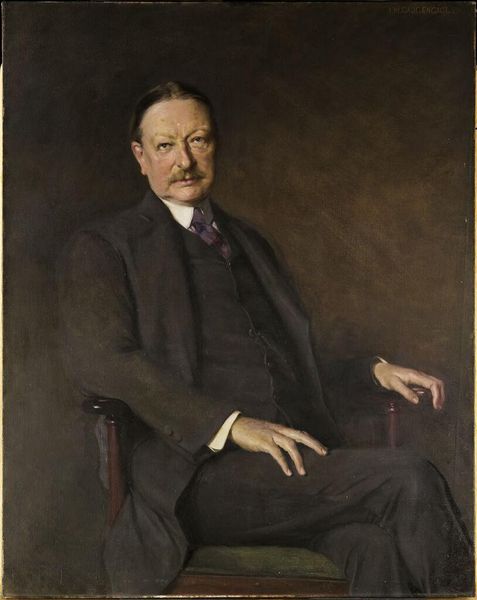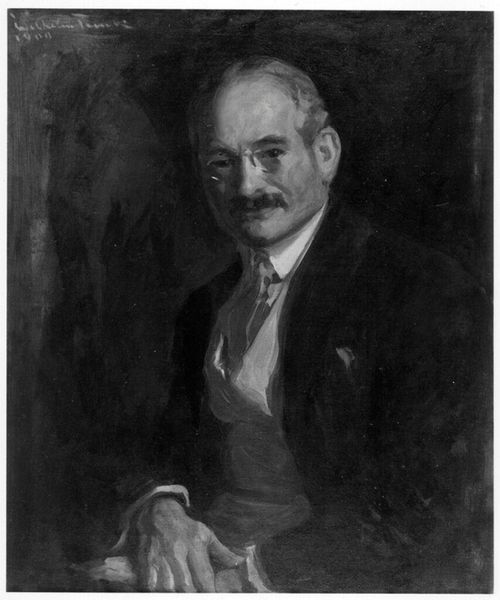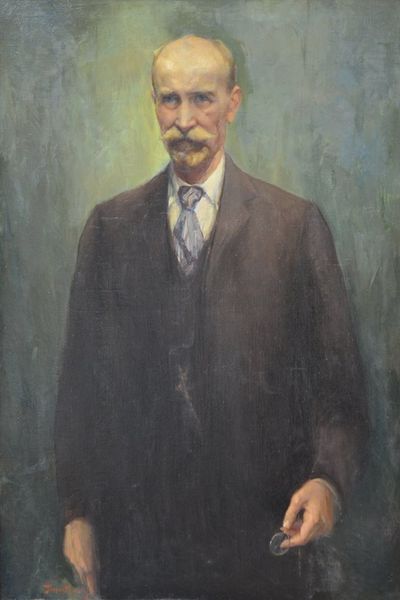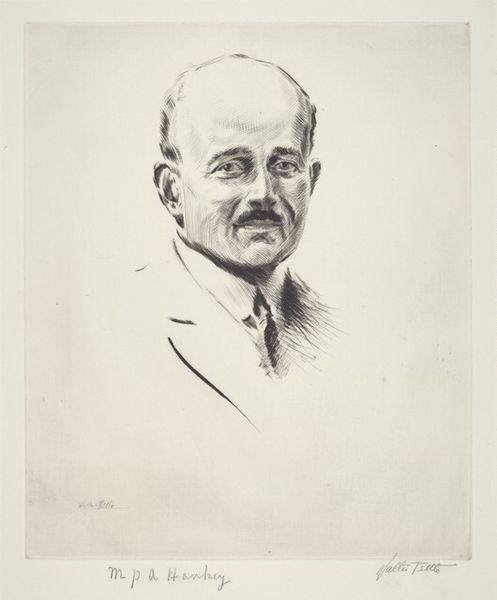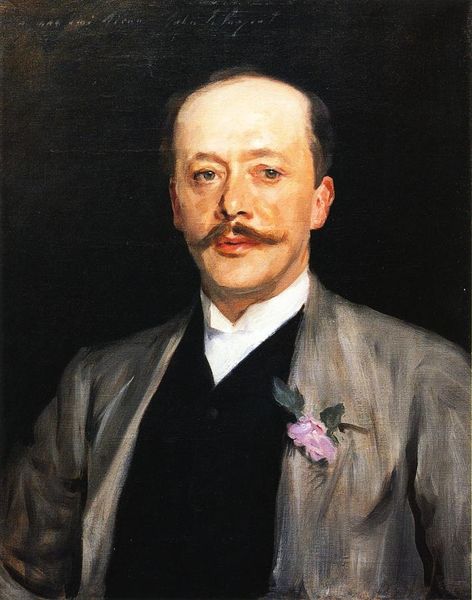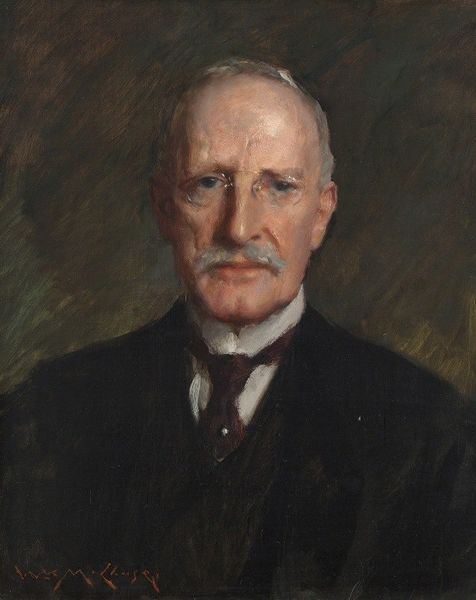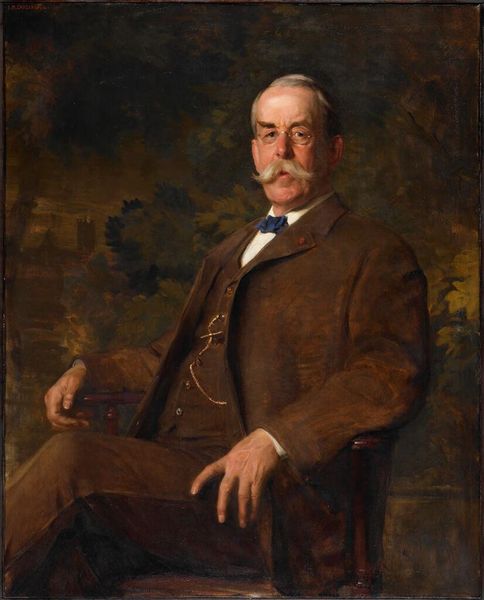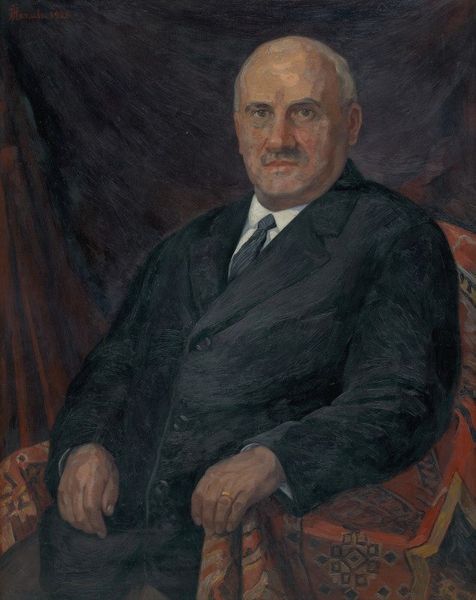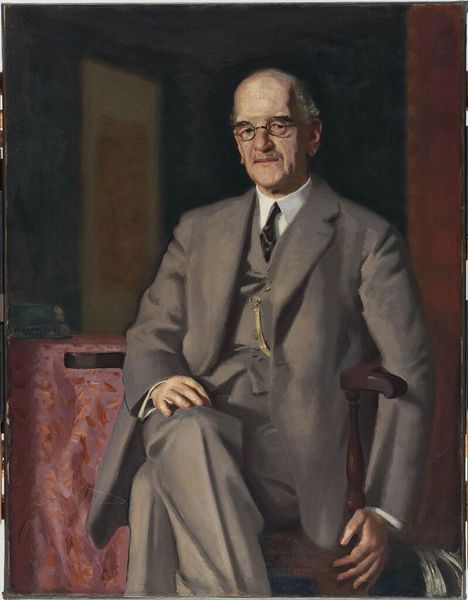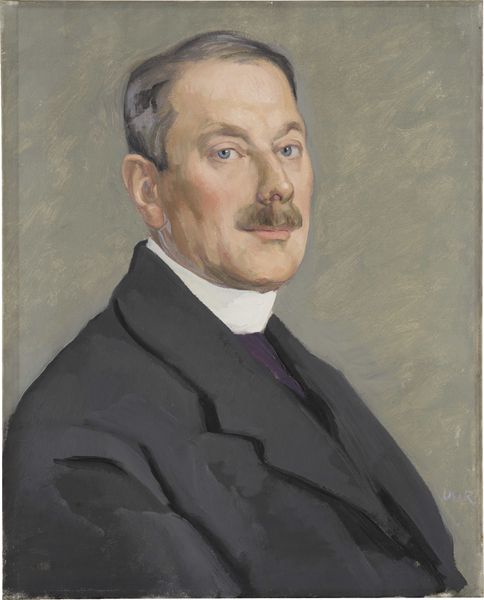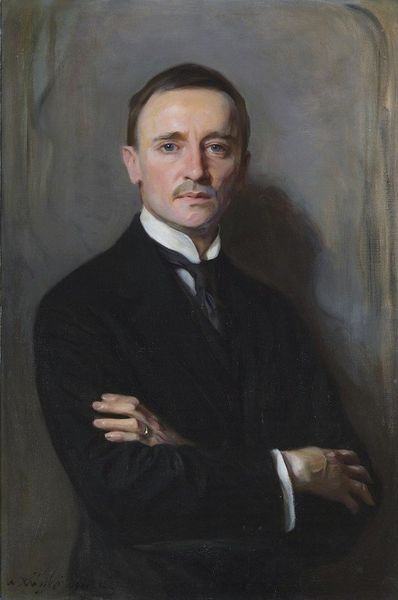
oil-paint, oil-on-canvas
#
portrait
#
oil-paint
#
united-states
#
portrait drawing
#
academic-art
#
oil-on-canvas
#
portrait art
#
modernism
#
realism
Dimensions: 43 x 32 1/4 x 1 in. (109.22 x 81.92 x 2.54 cm) (canvas)
Copyright: No Copyright - United States
Editor: So, here we have Ellen Gertrude Emmet Rand's "Portrait of John R. Van Derlip," painted in 1929 using oil on canvas. It strikes me as a fairly conventional, formal portrait... but I’m curious about more than just first impressions. What do you see in this piece? Curator: Initially, the formal composition presents a study in contrasts: the light illuminating Van Derlip's face and hands against the sombre background. The tonal gradations, from the inky black of his suit to the subtle pinks and yellows in his skin, are expertly handled. What do you make of the relationship between the figure and the ground? Editor: I see how the darkness makes the face stand out, but almost too much. The body sort of disappears. Is that intentional? Curator: Perhaps. Note the artist's employment of chiaroscuro, and the ways the brushstrokes define form and texture. Look at the precise detail in the rendering of his spectacles versus the more generalised treatment of his jacket. What does that juxtaposition convey to you about the artist's focus? Editor: It’s like she wanted us to really *see* him, not just his clothes or social status, but… him. The person. Curator: Precisely. Rand utilizes the formal elements—line, color, value—to achieve a heightened sense of individuality. And where do you perceive that to come from – the face, the figure, the overall composition? Editor: It definitely comes down to how all those things work together. Now I'm looking closer. Curator: Indeed. And by appreciating these deliberate formal choices, we appreciate Rand’s unique interpretation of portraiture. Editor: This was enlightening! It really gave me a new lens through which to see the work.
Comments
No comments
Be the first to comment and join the conversation on the ultimate creative platform.
